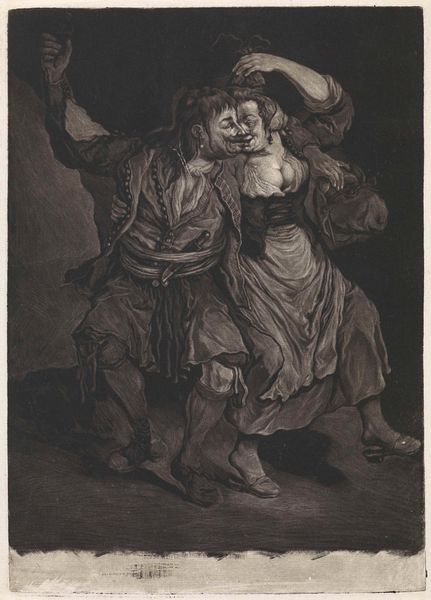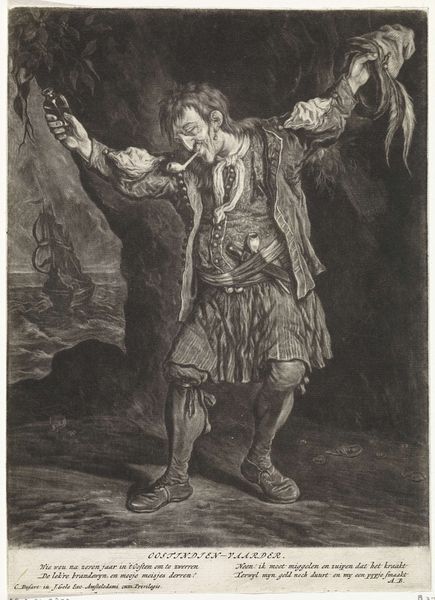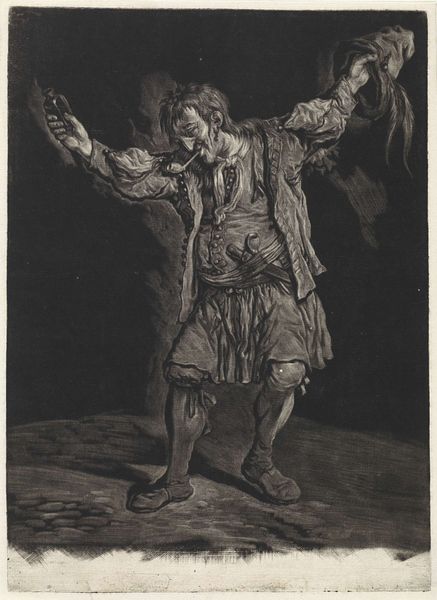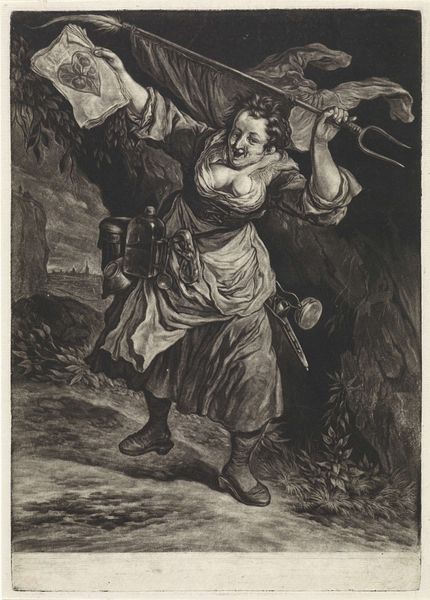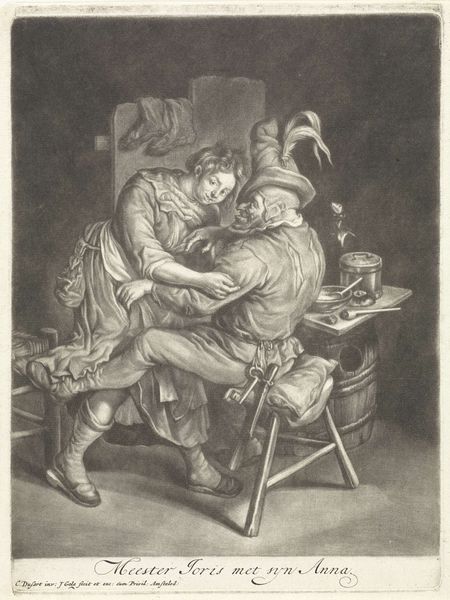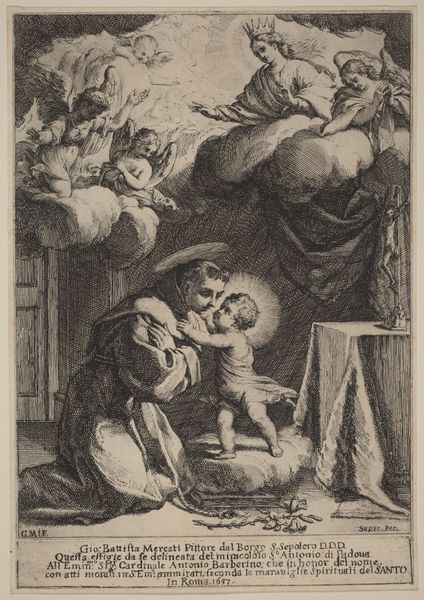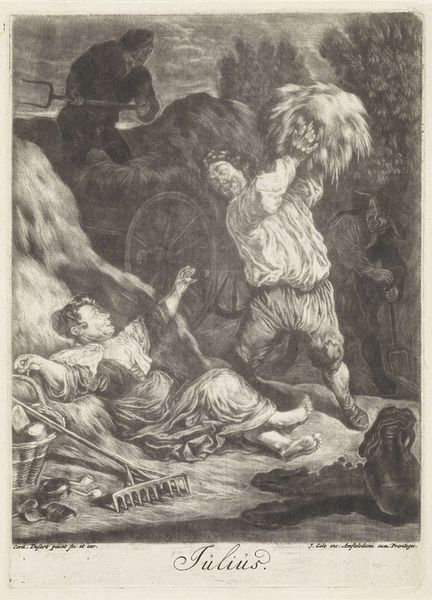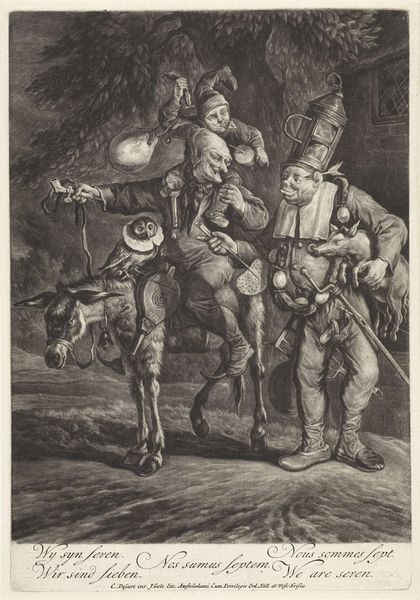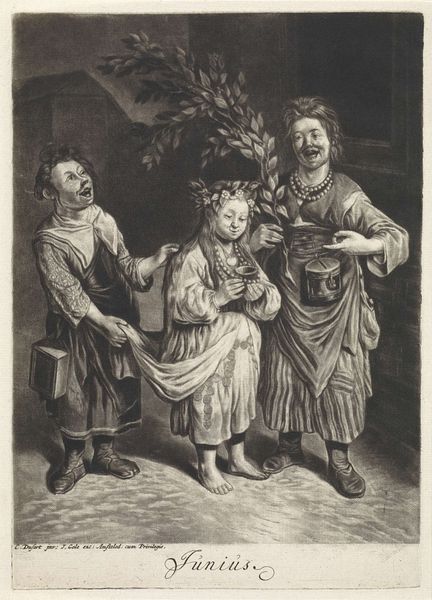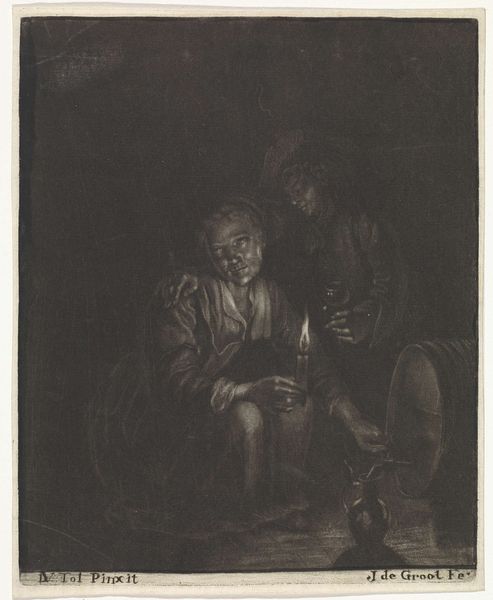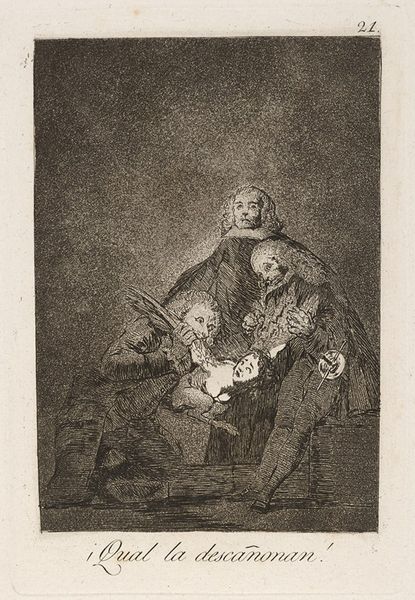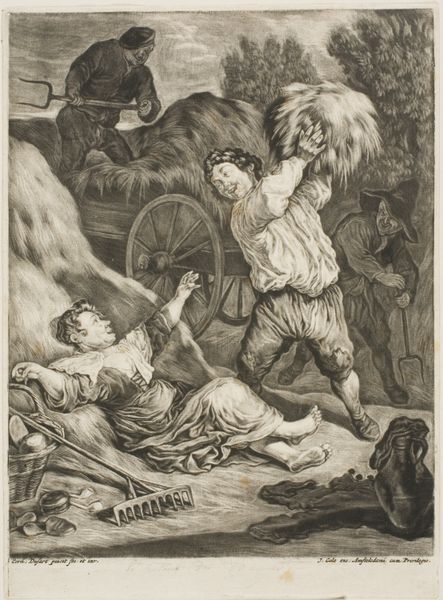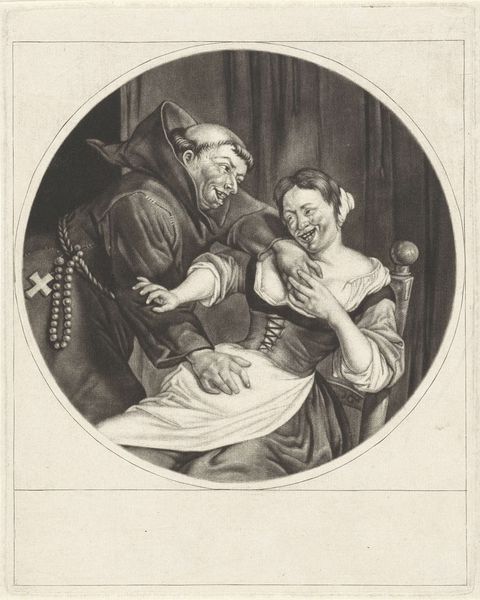
print, etching
#
narrative-art
#
baroque
# print
#
etching
#
landscape
#
genre-painting
Dimensions: height 250 mm, width 178 mm
Copyright: Rijks Museum: Open Domain
Cornelis Dusart created this etching, Dansend paar, in 1695. It's made using a technique that relies on the corrosive properties of acid to create an image in metal, which is then inked and printed. Look closely, and you’ll see how the etched lines define the figures and their clothing, creating a sense of depth and texture. The stark contrast of light and shadow, achieved through varied line thickness and density, brings a dynamic energy to the dancing couple. Etching was a printmaking technique that allowed for relatively quick reproduction, making art accessible to a broader audience. It democratized image-making, moving away from unique artworks towards multiples, a shift that aligns with early capitalist models of production. The detailed depiction of everyday life, combined with the relative ease of production, positions this etching as a fascinating artifact of its time, blurring the lines between art and commodity. Considering the material and making of this print offers insight into its cultural significance, reminding us of the social and economic forces at play in the art world then, and now.
Comments
No comments
Be the first to comment and join the conversation on the ultimate creative platform.
